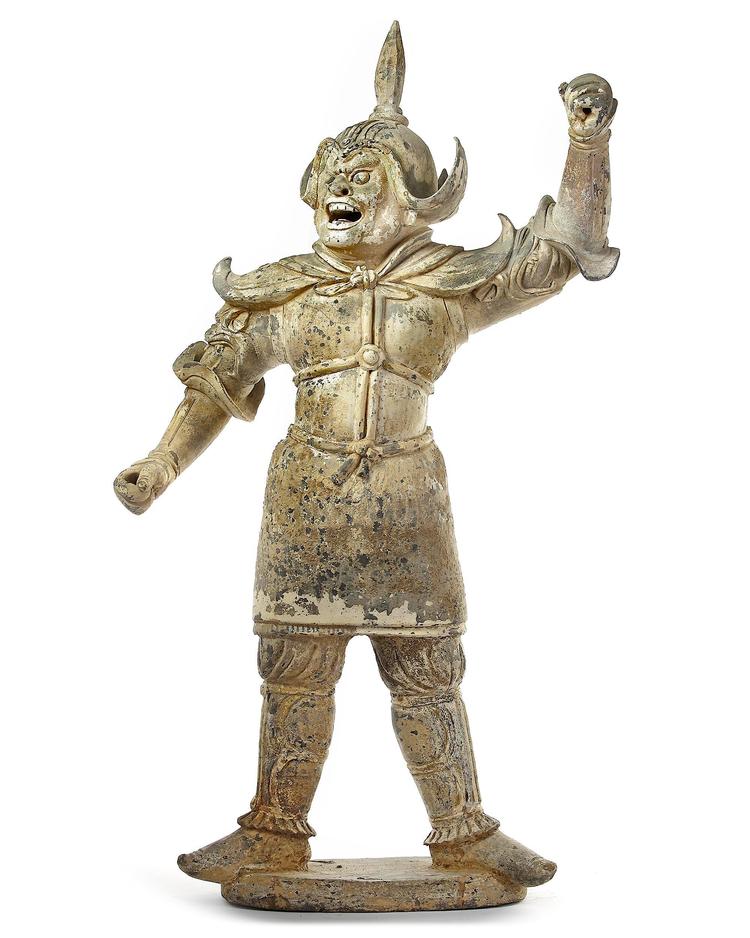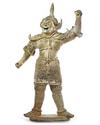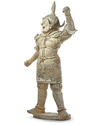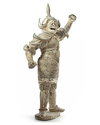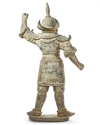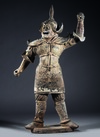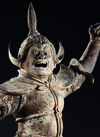A LARGE CHINESE POTTERY GUARDIAN KING, EARLY TANG DYNASTY, MID 7TH CENTURY
A grey pottery guardian king The Tang dynasty was a luxuriant period and their aristocrats could affordBsumptuous tombs. Depending their rank, the tomb chamber displayed larger and better quality of a varied array of pottery horses, camels, grooms and other subjects. The entrances to these chambers however, were always watched over by glazed or painted pottery guardians. The principle guardians, directly fronting the entrance, were a pair of seated earth spirits. Just behind these were positioned a pair of guardians like the fine presented, single example. In most tombs only one pair was represented and sculpted by the artist in a complementary standing posture. According to archaeological evidence richer burials could have up to four standing guardians. One may assume that the presented guardian was positioned on the left side of the entrance, upon entering. The guardian figure is sculpted in an aggressive stance with his hip slightly trusted to the right, legs spread and both feet firmly placed on a rectangular plinth. His left hand is raised with clenched fist while the right arm is lowered displaying the same gesture. His menacing face shows protruding eyes below furrowed brows, broad nose, mouth opened to scream, displaying at the same time two rows of teeth. On his head he wears a helmet decorated with upturned flaps and a shaped pointed finial. The guardian figure is fully outfitted in heavy, modelled thigh-length leather armour. The breastplates or cuirass are held in place by rope-like straps encircling the mid-riff and connected to a girdle tied beneath his prominent stomach. Underneath the armour is still visible a tunic with short floating sleeves and a pair of lion-mask epaulettes. Around his neck and shoulders a stole is draped knotted at the front bandoleer his throat. His legs are covered with a pair of trousers just revealing boots. Most likely the surface of this pottery figure was once extensively painted with various designs that glittered in the sparse light, and would ward off intruders when entering such a tomb. The tradition of guardians overlooking the entrance of a grave tomb predates the Tang period and they were placed directly on a rocky platform. Around the mid-seventh century a new type evolved, known as shenwang. These ‘heavenly kings’ subdued now animals. One of the subdued animals is the ox while the other represents a deer-like creature. A later development and eventually predominating, sees both guardians trampling on demonic figures. In both latter forms they are known as tianwang or lokapala. As they strongly resemble the four guardians of the Buddhist law, which faith had imbued the entire Tang upper-society, both concepts became integrated.
Height 91 cm. Oxford Authentication Sample
PROVENANCE Private collection, The Netherlands
